A ball of mass is thrown at a wall. It strikes the wall with a speed of perpendicular to the wall and bounces off the wall with a speed of . Explain the changes in momentum and energy that happen in the collision between the ball and the wall. Give numerical values where possible.

Important Questions on Momentum
A snooker ball strikes a stationary ball. The second ball moves off sideways at to the initial path of the first ball.
Use the idea of conservation of momentum to explain why the first ball cannot travel in its initial direction after the collision. Illustrate your answer with a diagram.
Figure 6.17 shows the momentum vectors for particles 1 and 2, before and after a collision. Show that momentum is conserved in this collision. Draw the vector triangle that shows that momentum is conserved in the collision. Show the value of each angle in the triangle.
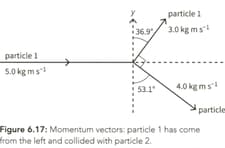
Figure shows the momentum vectors for two identical particles, and before and after a collision. Particle was at rest before the collision. Show that momentum is conserved in this collision.
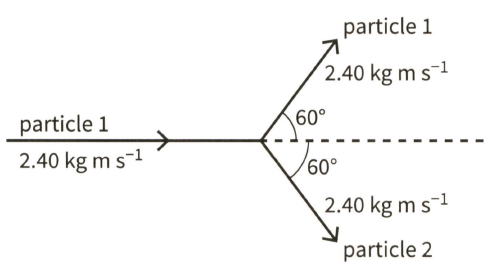
A snooker ball collides with a second identical ball as shown in Figure
Determine the components of the velocity of the first ball in the directions.
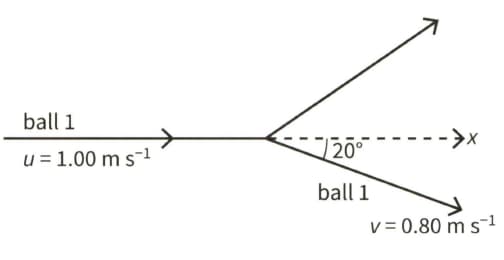
A snooker ball collides with a second identical ball as shown in Figure
Hence, determine the components of the velocity of the second ball in the directions.
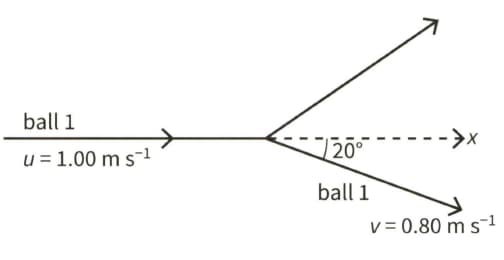
A snooker ball collides with a second identical ball as shown in Figure
Hence, determine the velocity (magnitude and direction) of the second ball.
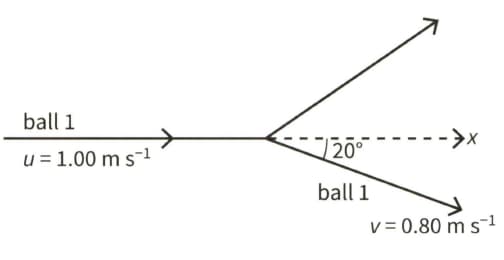
A car of mass is travelling at a velocity of . It accelerates for , reaching a velocity of . Calculate:
(a) The change in the momentum of the car in the period
A car of mass is travelling at a velocity of . It accelerates for , reaching a velocity of
Calculate the average resultant force acting on the car as it accelerates.
